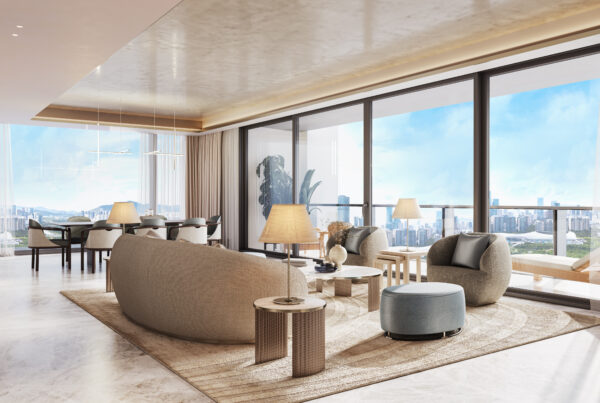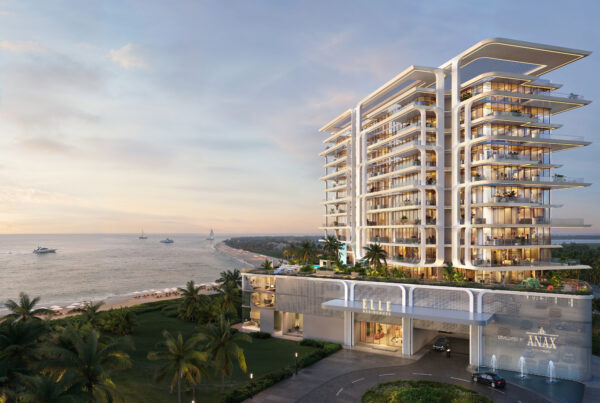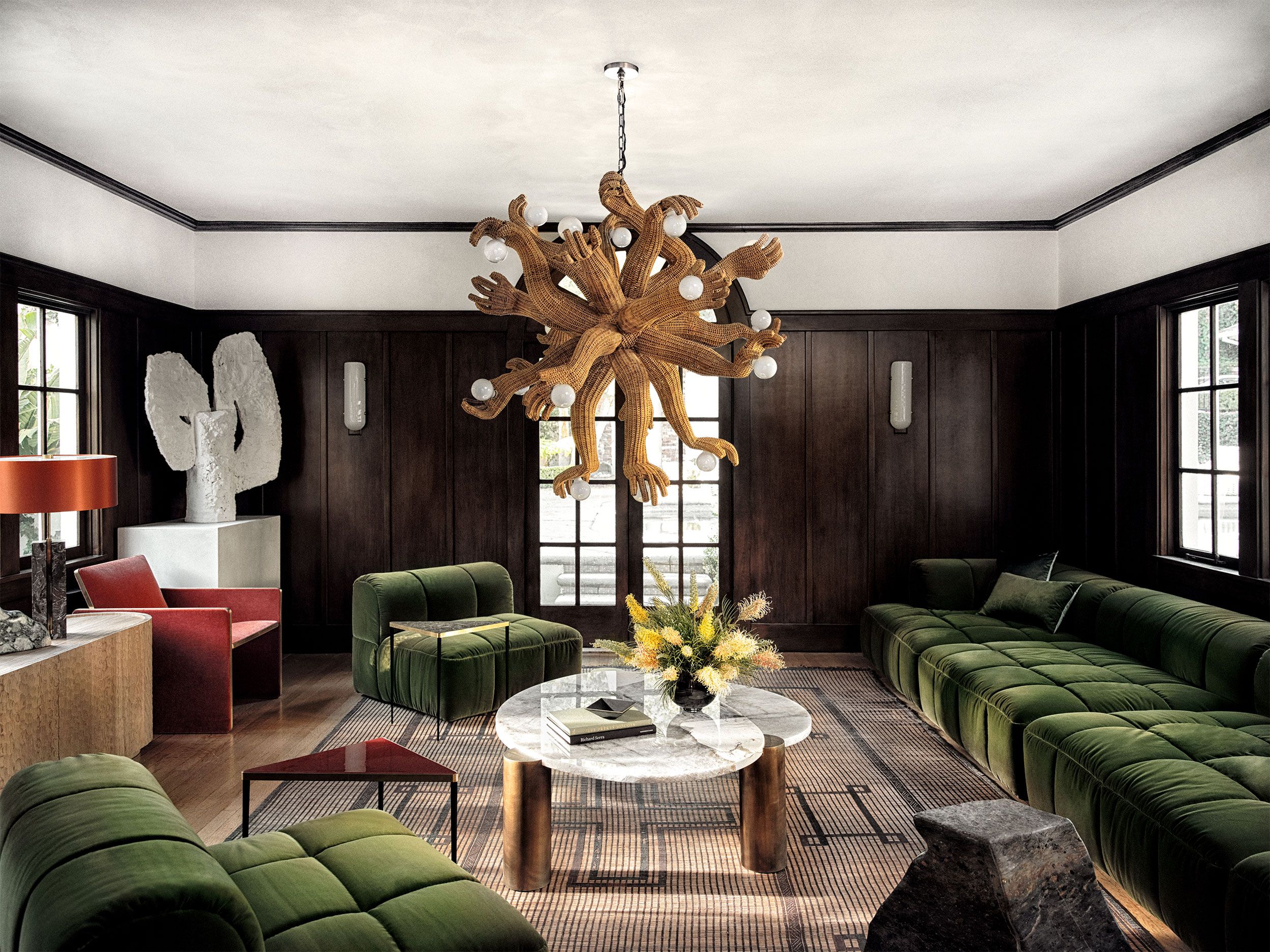
Credits: Elle Decor
Dear Readers,
In this article, we will delve into the interior design trends for 2025.
We will draw inspiration from the latest developments in furniture, colors, and forms.
It is fascinating to see how everyday elements can significantly influence our lives and be adapted to create the ideal environment within our homes.
Biophilic Design
Biophilic design is an approach to architecture and interior design that integrates natural elements and patterns to create a connection between people and their environment, enhancing well-being and fostering a sense of harmony with nature.
Here some elements that help create a biophilic environment in our homes:
Inclusion of NATURAL ELEMENTS such as plants, flowers, water features and the usage of natural materials like wood and stone.
Usage of NATURAL LIGHT: Incorporate large windows and skylights to allow ample natural light to flood your home. Additionally, utilize reflective surfaces to enhance and distribute light throughout the space.
ORGANIC FORMS AND PATTERNS: Embrace the biophilic concept by incorporating curved lines in furniture to create a more organic feel. Moreover, use nature-inspired textiles that showcase leaves, flowers, waves, and other natural elements.
A further characterizing element of the biophilic design is the INDOOR – OUTDOOR CONNECTION.
Create a seamless transition between indoor and outdoor spaces using sliding doors, patios, and terraces. When this isn’t possible, position furniture to maximize views of the outdoors through windows.
Finally have care to choose a NATURAL COLOR PALETTE. Earthy browns, soft greens, deep blues, and neutral tones like beige, ivory, and gray will evoke a sense of calmness and harmony reflecting the hues found in forests, oceans, and natural landscapes.
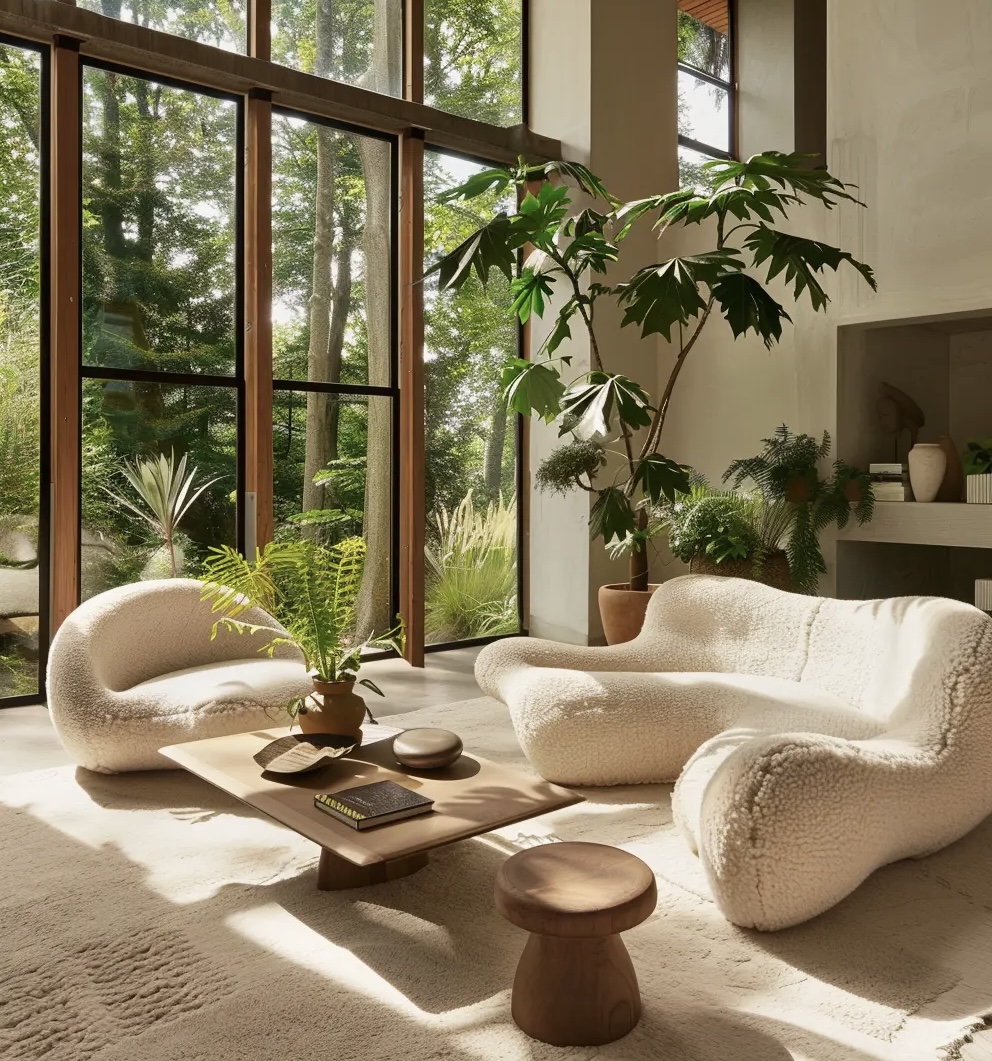
Credits: dvgarchitecture.com
Discreet Technology
As technology continues to advance, artificial intelligence and human imagination give rise to boundless possibilities for creation and innovation.
Interior spaces are evolving to challenge convention and embrace creativity in unprecedented ways with technology facilitating the development of décor alternatives and more sustainable home solutions. Innovations include the use of post-waste materials such as recycled plastic, reclaimed wood, and repurposed metal, as well as 3D-printed textiles and acrylic furniture.
Simultaneously, technology is becoming less conspicuous, seamlessly blending into the home environment through intuitive controls. Features like wireless charging surfaces, smart security systems, intelligent appliances, and home voice assistants are just a few examples.
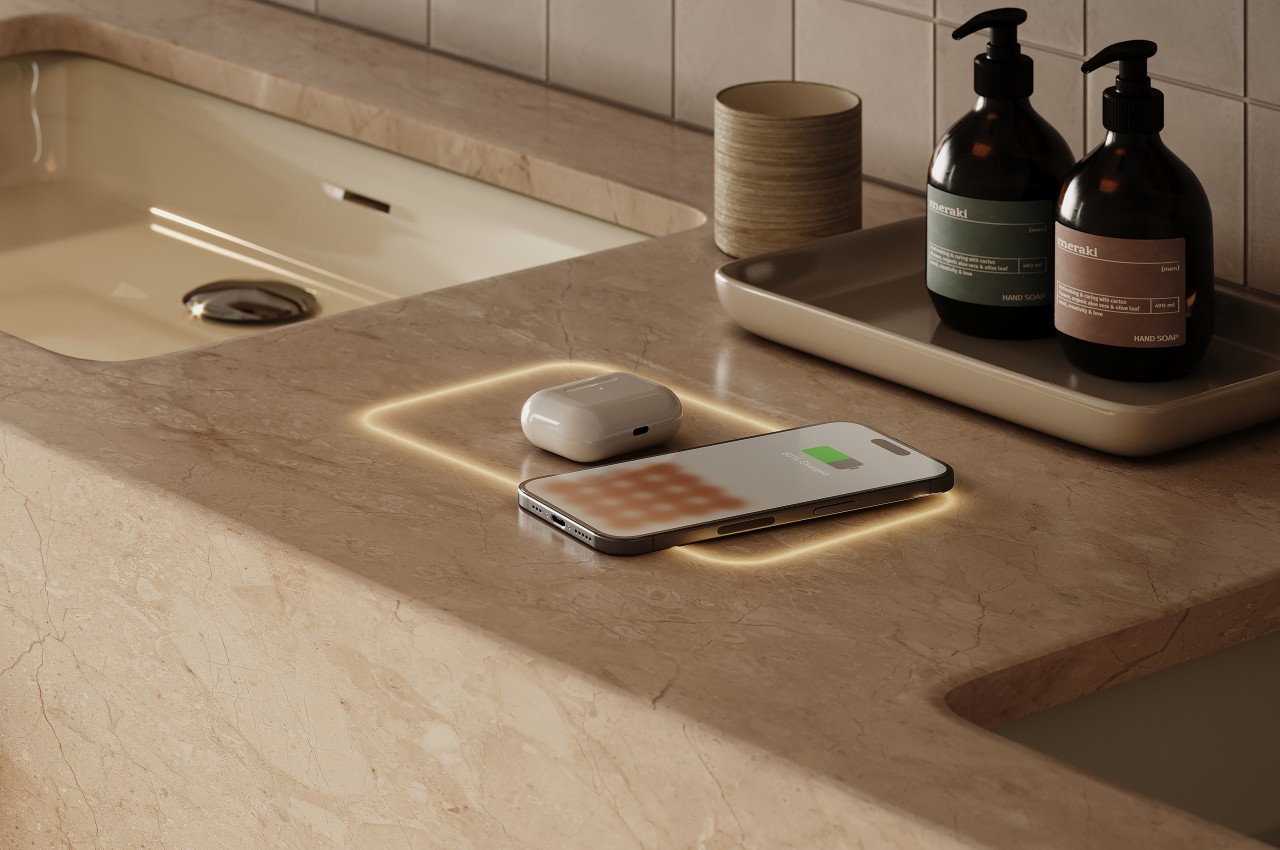
Credits: freepower.com
Authentic Living
This trend reflects a renewed reverence for nature and a deep appreciation for authenticity.
Spaces are characterized by raw and pure elements, infusing them with a sense of genuineness.
Nature inspires craftsmanship, influencing forms and designs.
The use of natural fibers and organic materials is soaring in manufacturing, emphasizing artisanal quality.
This trend carries a deep sense of responsibility towards our planet. Eco-friendly choices are essential, prioritizing sustainable materials, energy-efficient solutions, and upcycled furnishings. Sustainability extends beyond eco-friendliness; it’s about creating spaces that enhance well-being and improve quality of life.
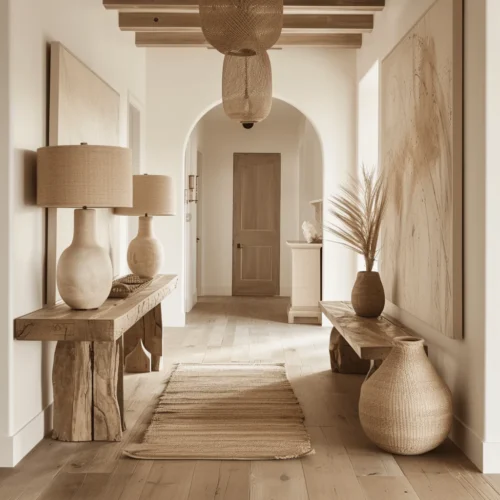
Credits: edwardgeorgelondon.com
Multifunctional Spaces
Multifunctional spaces are areas designed to serve multiple purposes or activities, maximizing the use of space and enhancing flexibility in its use.
For interior it is all about having a space in your home that can be flexible and adapt with you and your everyday life and activities. The flexibility and functionality of both the room and the pieces within it are essential.
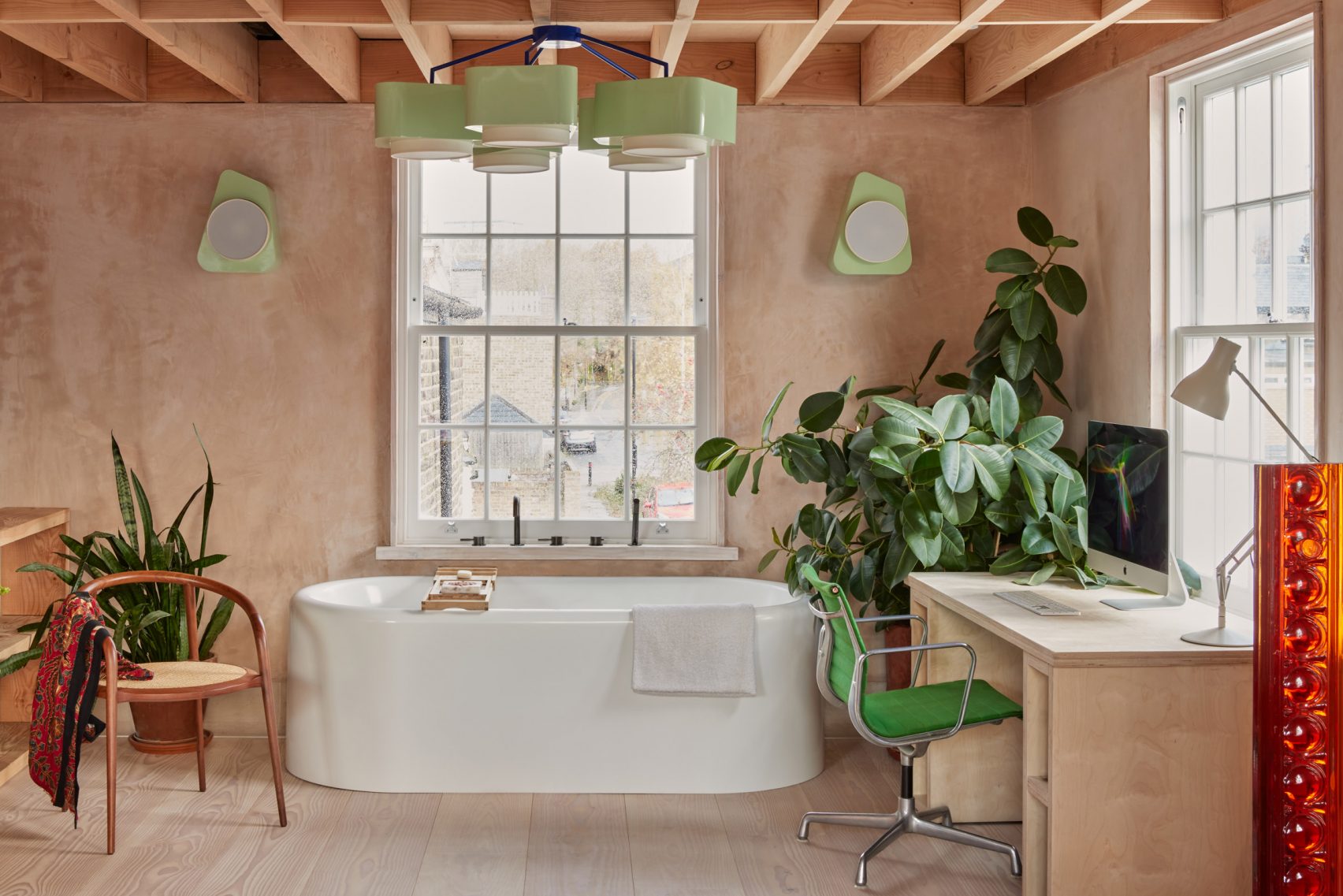
Credits: Edmund Dabney – Highbury apartment, UK, by Holloway Li

Credits: “Ventaglio” table by Charlotte Perriand for Cassina
Sensorial Design
Sensorial design refers to a design approach that focuses on engaging and enhancing the senses—sight, sound, touch, smell, and taste. The goal is to create environments and products that offer a richer, more immersive experience by appealing the senses.
The main distinguishing features of this style are:
MAXIMALISM & BOLD PATTERNS stem from the “more is more” philosophy, embracing abundance and diversity in decor. This movement focuses on creating vibrant, eclectic spaces that express personality and creativity. Bold patterns play a crucial role in maximalism, featuring striking designs, vivid colors, and intricate motifs. The goal is to create visually stimulating environments filled with layers of texture, color, and art, resulting in a rich, dynamic atmosphere that celebrates individuality and artistic expression.
COLORFUL ACCENTS: burnt sienna, honey gold, royal blue, cyber lime and pink flash.
By introducing these vibrant pieces through furniture, artwork, or decor, the spaces gain a refreshing, cheerful, and creative atmosphere. This trend balances the calmness of neutral tones with the energy and personality of bright colors.
TEXTURE: the use of different materials adds depth, warmth, and interest to a space.
Layer different textures such as plush rugs and smooth leather to create a multi dimensional environment. Combine textiles like velvets, wools or linen to create tactile variety. Mix materials like wood and glass, stone and metal; to add visual intrigue use ribbed panels or glass blocks.
Don’t’ forget that that also woven blankets, throw pillows and wall hangings also help creating rich and inviting interiors.
LED LIGHTING: light plays a crucial role in our daily lives, making the selection of the right lighting system essential. Led lights are at the forefront of interior design trends, enhancing living spaces with adjustable color and intensity. Their ability to closely mimic natural light and its variations throughout the day, not only creates a dynamic and visually appealing environment but also supports our natural circadian rhythms, which promotes better sleep and overall health.
Additionally, led lighting is eco-friendly and offers a wide range of customization options, making it a versatile and sustainable choice for modern interiors.
CURVED LINES: as already mentioned before, the use of organic forms creates a deeper connection with nature and enhances the overall wellbeing. The use of curved lines in furniture and decor creates both fluidity and harmony and a sense of movement adding visual interest to a space.
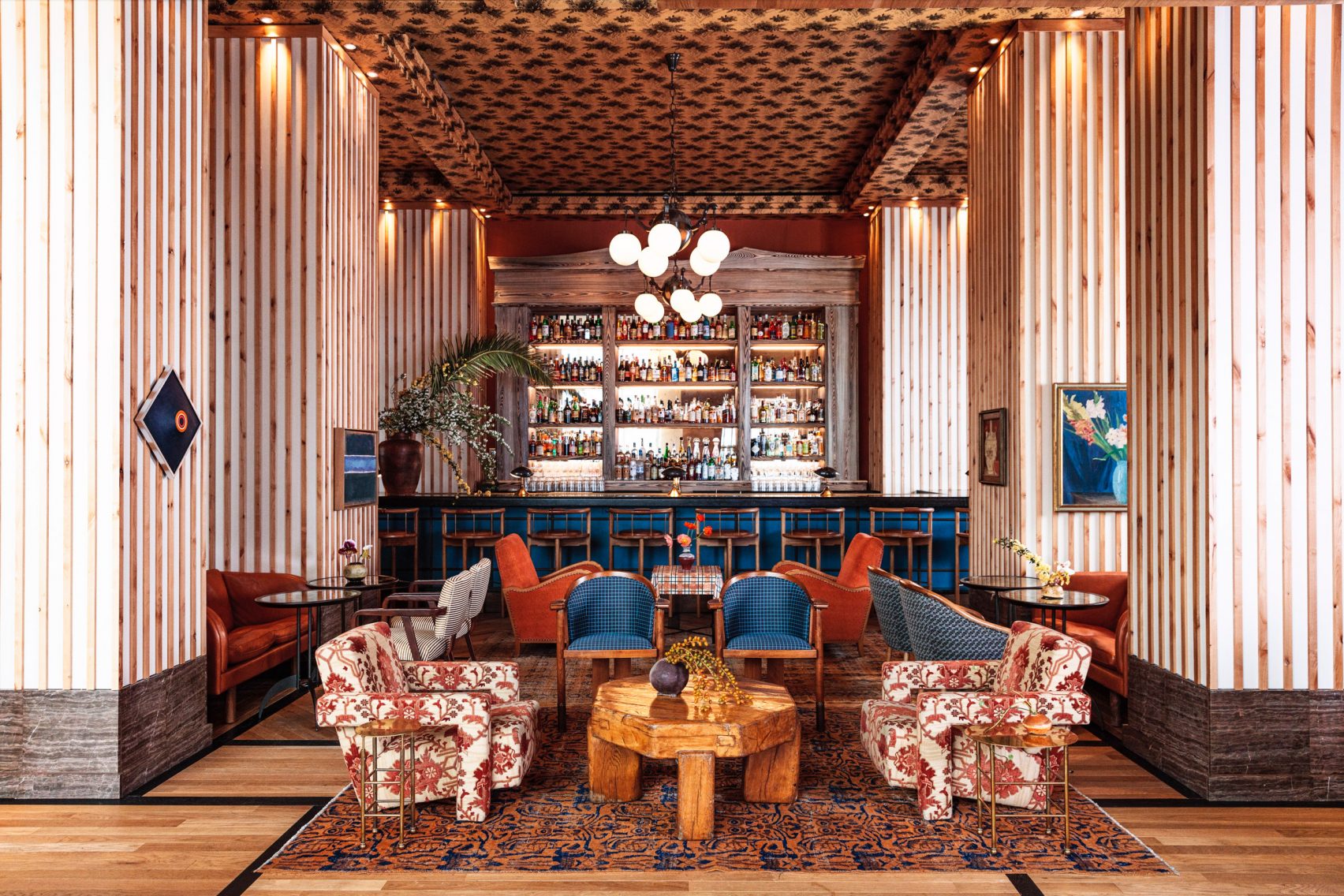
Credits: The Ingalls – Austin Proper Hotel and Residences, USA, by Kelly Wearstler
Timeless Sustainability
The greater interest in the planet and human well-being is backed up by blooming of sustainable options.
VINTAGE REVIVAL
The trend of “what’s old is new again” is increasingly evident in the design world, much like it is in fashion. Vintage stores have become trendy destinations for creatives and artists, who breathe new life into past couture with fresh styling interpretations. Similarly, in interior design, antiques are experiencing a resurgence, with restored and rediscovered pieces gaining renewed popularity and success.
DO IT YOURSELF: instead of purchasing decor for your new home, create it yourself. Nothing can be more personal and fitting for your space than something you made with your own hands. Beginners can start with projects like wall decorations, clay vases, or updating old mirrors, while more experienced crafters might tackle more complex tasks such as restoring vanities, chairs, or lighting fixtures. Let your imagination run free and break away from conventional boundaries. This approach not only allows you to step out of your comfort zone and craft something unique but also creates cherished memories along the way.
REPAIR & REUSE: not everything that is broken or old needs to be discarded—often, the most beautiful creations emerge from what was once considered waste. Repurpose old doors as table surfaces, transform vintage suitcases into coffee tables or storage solutions, and integrate salvaged architectural elements like columns, doors, or window frames into modern interiors for a unique touch. Convert old kitchen cabinets into bookshelves or media units by adding shelving and giving them a fresh coat of paint. Embrace creativity in reusing and repairing to breathe new life into cherished items.
LONGEVITY OF FUNITURE &THOUGHTFULLNESS
As we move towards a more conscious approach to design, the concepts of Longevity of Furniture & Thoughtfulness emphasize durability and intentionality in our living spaces. This trend champions furniture that is not only built to last but also crafted with care for both aesthetic and environmental impact. It reflects a shift towards investing in timeless pieces that transcend fleeting trends, promoting sustainability and reducing waste. Thoughtfulness in design means choosing materials and methods that prioritize quality, repairability, and minimal environmental footprint, ensuring that every element in our homes contributes to a lasting, meaningful environment.
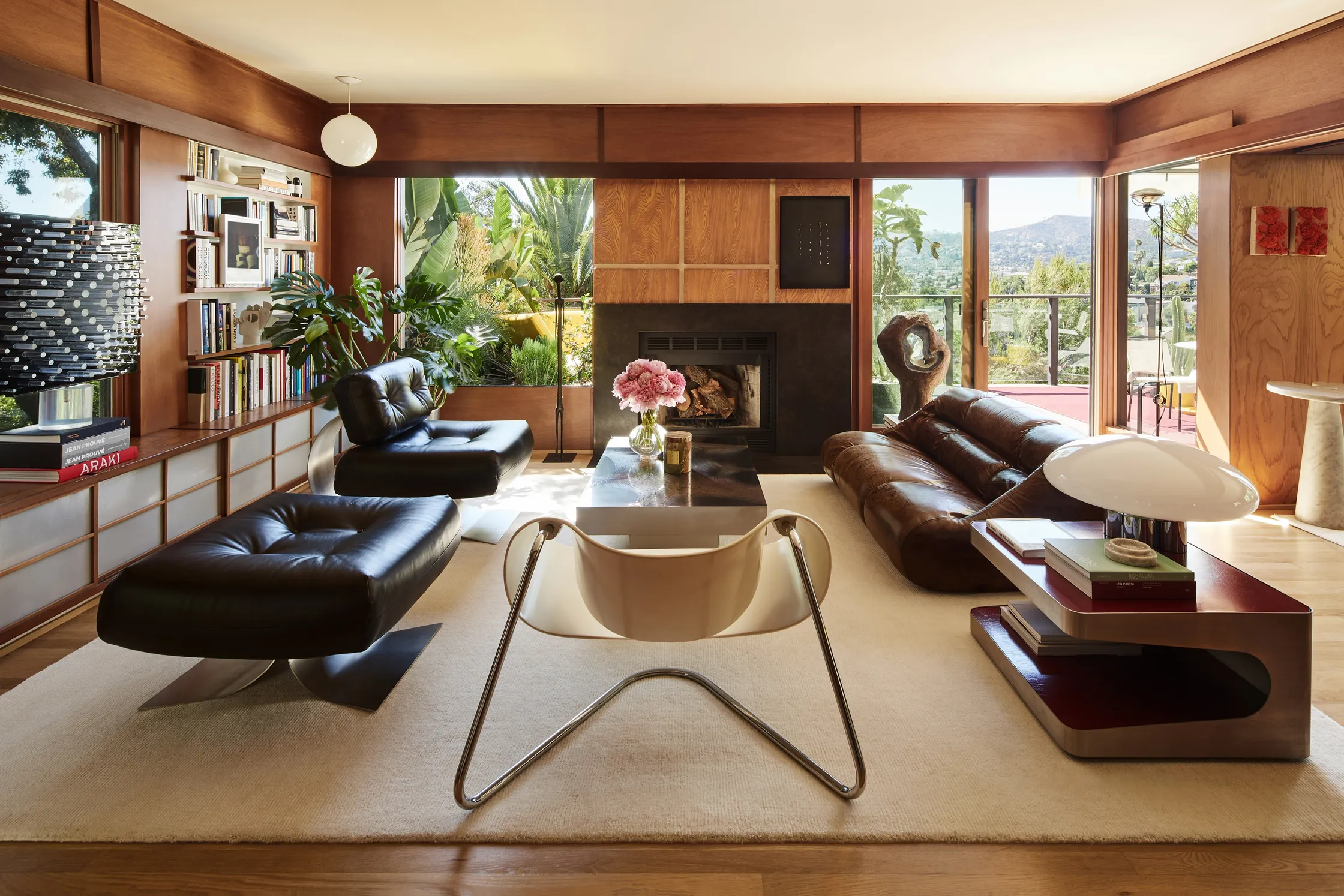
Credits: Vogue.com
Last tip for those who read until this point: the colors guiding the interior design trends during 2025.
- Natural colors like terracotta, clay and shades of green.
- Warm neutrals as oatmilk, chalk and grey
- Pastels: lavender, peach, mint, light blue
- Royal Blue
- Cyber Lime
- Pink Flash
Thank you for reading, we look forward to uncovering new subjects with you in the next edition of The One Atelier’s newsletter.
Until then, if you want to share with us your opinion and vision don’t hesitate to contact us and start a conversation on our social medias.
Sources:
- AD pro: “Design Trends 2025: We’re Loving This Very Early Look From WGSN”
- Nordroom: “Color of the Year 2025 Prediction”
- Budwing: “Tendenze WGSN del interior design 2025”
- Budwing: “Tendenze cromatiche 2025 nell’interior design: un viaggio nel futuro”
- Belysse: “The Future of Interior Design: Trend Report for 2025”
- Design Studio: “Interior Design Trends 2025”
- Spruce Magazine: “How to Incorporate Sensory Design into Your Space”
- Shepley Bulfinch: “Evolving our connection with nature: Six principles of biophilic design and biophilic design elements”
- “Biophilic Design: The Theory, Science, and Practice of Bringing Buildings to Life” by Stephen R. Kellert, Judith H. Heerwagen, and Martin Mador: A comprehensive guide to applying biophilic principles in design practice.
- Architctural digest
- Dezeen magazine
- Arch20: “Multifunctional Spaces Are Fundamental for a Better Quality of Life”
- Danetti: “Multifunctional Spaces: Here’s What You Need To Know About Multifunctional Interior Design”
- Arch Daily: “Multifunctional Spaces: Integrating Home Environments With Countertops”
- TJ2 lighting: “10 Great Uses For LED Lighting In Interior Design”
- Barbulianno: “TOP 5 Benefits of Using LED Lighting In Interior Design”

